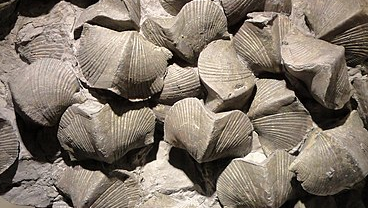New research reveals that two major groups of shelled animals, brachiopods and bivalves, were not direct competitors during the largest mass extinction in Earth’s history 250 million years ago. As detailed in a study published in Nature Communications, both groups were hit hard by the end-Permian extinction and recovered in the Triassic period, responding similarly to external factors like temperature changes. While bivalves eventually became more dominant in modern oceans, it was not through direct competition with brachiopods. Rather, both groups independently adapted to the new post-extinction conditions, with brachiopods retreating to deeper waters. This research provides new insights into how life recovered from near annihilation after the devastating end-Permian event and rebuilt the foundations of modern ecosystems. Advanced computational analysis techniques shed light on macroevolutionary processes and interactions between major animal groups through this crucial extinction boundary.
The Geologic Time Scale: A Record of Earth’s History
The Biggest Extinction Events
The geologic record contains evidence of multiple mass extinction events that profoundly impacted life on Earth. The largest extinction events eliminated 50-90% of species and radically altered the planet’s biodiversity and ecology.
The Top 10 Largest Extinction Events
- End-Permian (252 million years ago) – 76% of species extinct
- End-Ordovician (444 million years ago) – 86% of species extinct
- End-Cretaceous (66 million years ago) – 76% of species extinct
- End-Triassic (201 million years ago) – 80% of species extinct
- End-Devonian (375-360 million years ago) – 75% of species extinct
- End-Capitanian (260 million years ago) – 56% of species extinct
- Dresbachian (488-482 million years ago) – 40% of species extinct
- End-Famennian (372-359 million years ago) – 57% of species extinct
- End-Cambrian (488 million years ago) – 40% of species extinct
- Toarcian (183-174 million years ago) – 48% of species extinct
The geologic time scale is divided into units based on major changes in Earth’s makeup as indicated by geological, paleontological, and geochemical evidence. Understanding where key events like extinctions and climate shifts occurred provides context for the changes in plant and animal life over Earth’s long history.
New Research Provides Insights into the End-Permian Mass Extinction
New research published in Nature Communications examines the interactions between two major groups of shelled animals, brachiopods and bivalves, during Earth’s largest mass extinction 250 million years ago. The end-Permian extinction event dramatically impacted global biodiversity, eliminating up to 96% of marine species.
The study analyzed origination, extinction, and fossil preservation rates of brachiopods and bivalves using advanced Bayesian computational techniques. The findings reveal that both groups were hit hard by the end-Permian crisis and recovered in the Triassic, responding similarly to external factors like temperature changes. This suggests they were not direct competitors as previously thought. While bivalves eventually dominated modern oceans, they did not outcompete brachiopods, which retreated to deeper waters after independently adapting to post-extinction conditions. The research sheds new light on how foundational marine ecosystems were rebuilt after the devastating end-Permian extinction event.
The Conventional View of the End-Permian Mass Extinction
The end-Permian mass extinction around 250 million years ago was the most devastating biodiversity crisis in Earth’s history, eliminating up to 96% of marine species and 70% of terrestrial species. Conventional thinking held that the global die-off was caused by massive volcanic eruptions in Siberia that released enormous amounts of greenhouse gases, causing rapid global warming and oxygen depletion in the oceans. Additionally, the standard view long suggested that in the aftermath of the extinction, bivalves outcompeted brachiopods and drove them into decline, replacing them in marine ecosystems. The perceived competitive replacement of brachiopods by the rising bivalves was considered a key example of how new ecosystems emerged following the catastrophic Permian-Triassic boundary event. However, the new research challenges these conventional assumptions about direct competition between these critical animal groups.
Conclusion
The new study provides several important insights that challenge conventional thinking about the end-Permian mass extinction and its aftermath. First, the research shows that brachiopods and bivalves were not direct competitors during the extinction recovery, but rather were independently responding to the same external pressures like rising ocean temperatures. Both groups were hit hard and rebounded together during the Triassic.
Additionally, the findings reveal that bivalves did not actively outcompete and displace brachiopods, as traditionally thought. Rather, the brachiopods retreated to deeper marine waters on their own as bivalves adapted better to the new conditions in shallow seas. This overturns the standard example of brachiopods being replaced by superior bivalve competitors after the Permian extinction.
Finally, the advanced computational analysis techniques demonstrate that major animal groups like molluscs were not necessarily in direct competition during mass extinctions, but were reacting to shared environmental factors. These insights provide a clearer picture of how diverse ecosystems were reconstructed from near total annihilation after the end-Permian event, the most catastrophic extinction in Earth’s long history. The new perspectives highlight how emerging analytical methods can shed light on large-scale patterns and questions in evolution and paleontology.
Link to primary source: https://www.bristol.ac.uk/news/2023/september/shell-life-post-mass-extinction-.html

